An effective call-to-action (CTA) is crucial for the effectiveness of your advertising. A well-formulated CTA not only leads to higher conversionrates but also motivates your target audience to take immediate actions. If you want to learn how to formulate effectiveCTAs, you are in the right place.
Key insights
- A call-to-action goes beyond a simple purchase; it should motivate users to take various actions.
- Urgency, social proof, and emotional appeal are key strategies for strong CTAs.
- Short and concise CTAs can be just as persuasive as detailed versions.
Step-by-Step Guide
1. Understand the Importance of a Call-to-Action
A call-to-action is more than just the end of your advertisement. Its purpose is to prompt users to take a specific action, whether it's a purchase, a comment, or clicking a button. Remember that CTAs can encourage not only conversions but also other actions like sharing or liking.
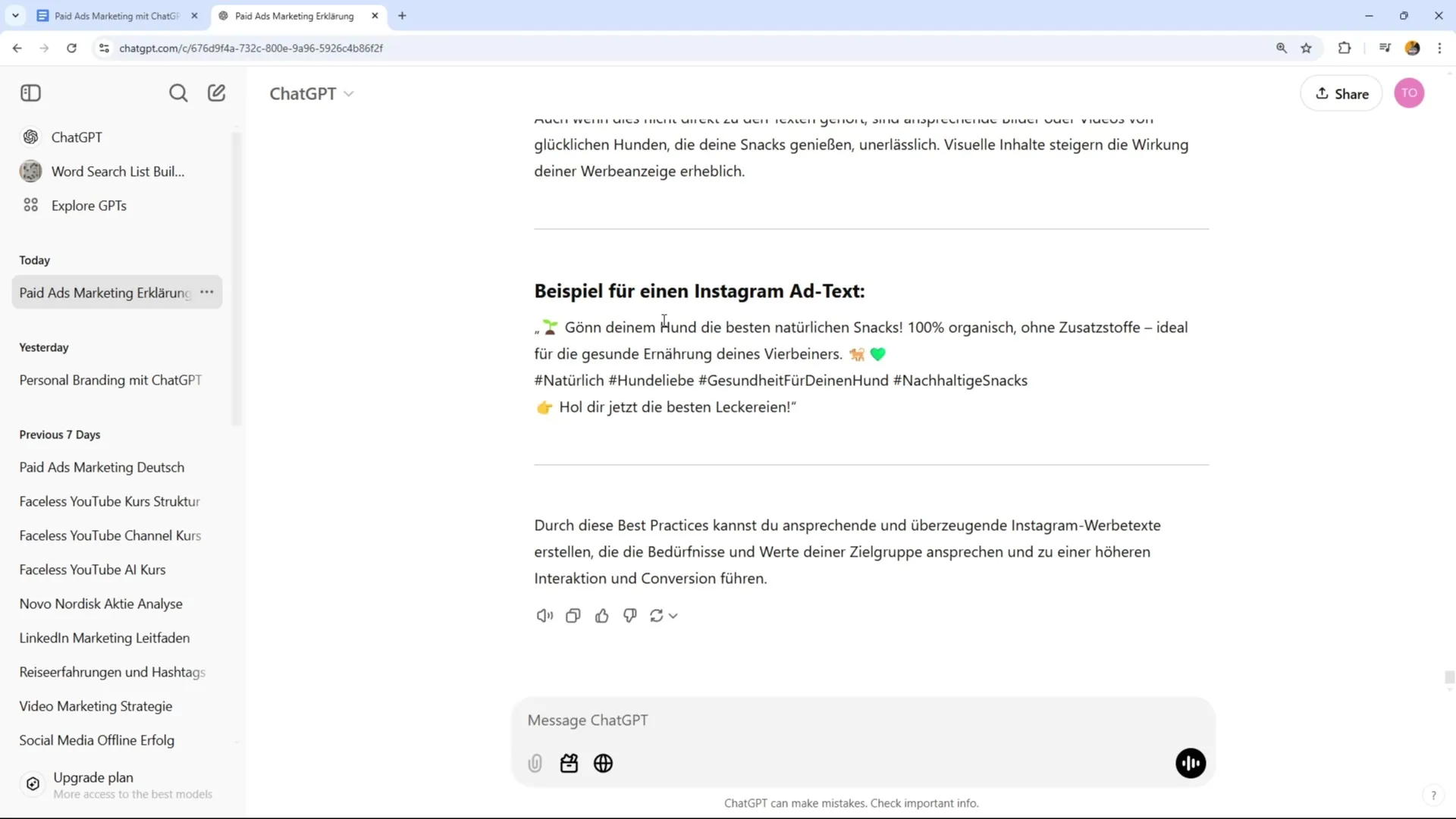
2. Identify the Right CTA for Your Product
Consider what actions you expect from your users. Do you want them to buy something or sign up for your newsletter? This step is about focusing on a specific action that is crucial for your business.
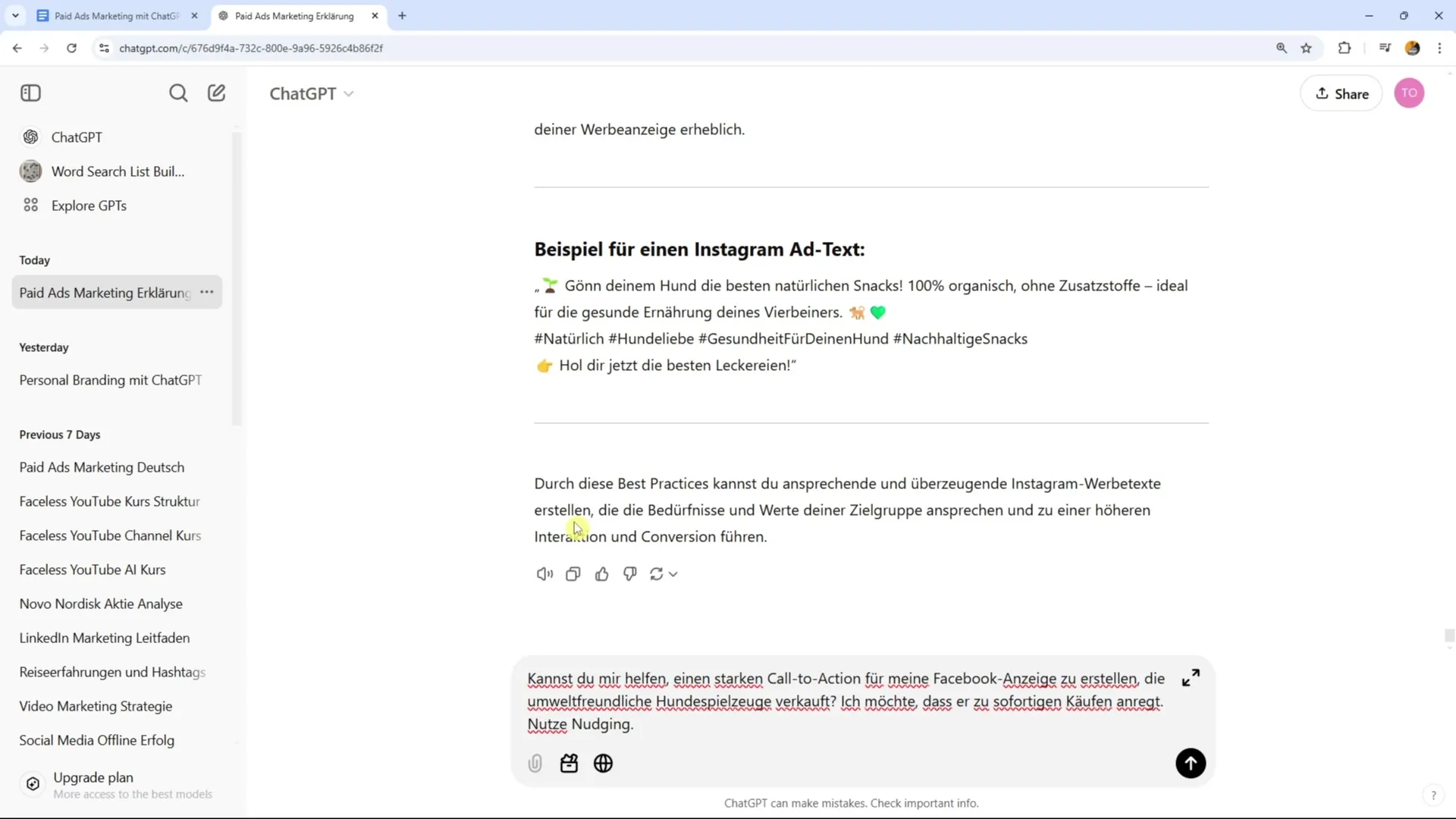
3. Use Nudging Strategies
Nudging describes techniques that encourage urgency and prompt users to make a decision. Use phrases that build a sense of time pressure, like "Act now" or "Order today." This urgency increases the likelihood of a positive response.
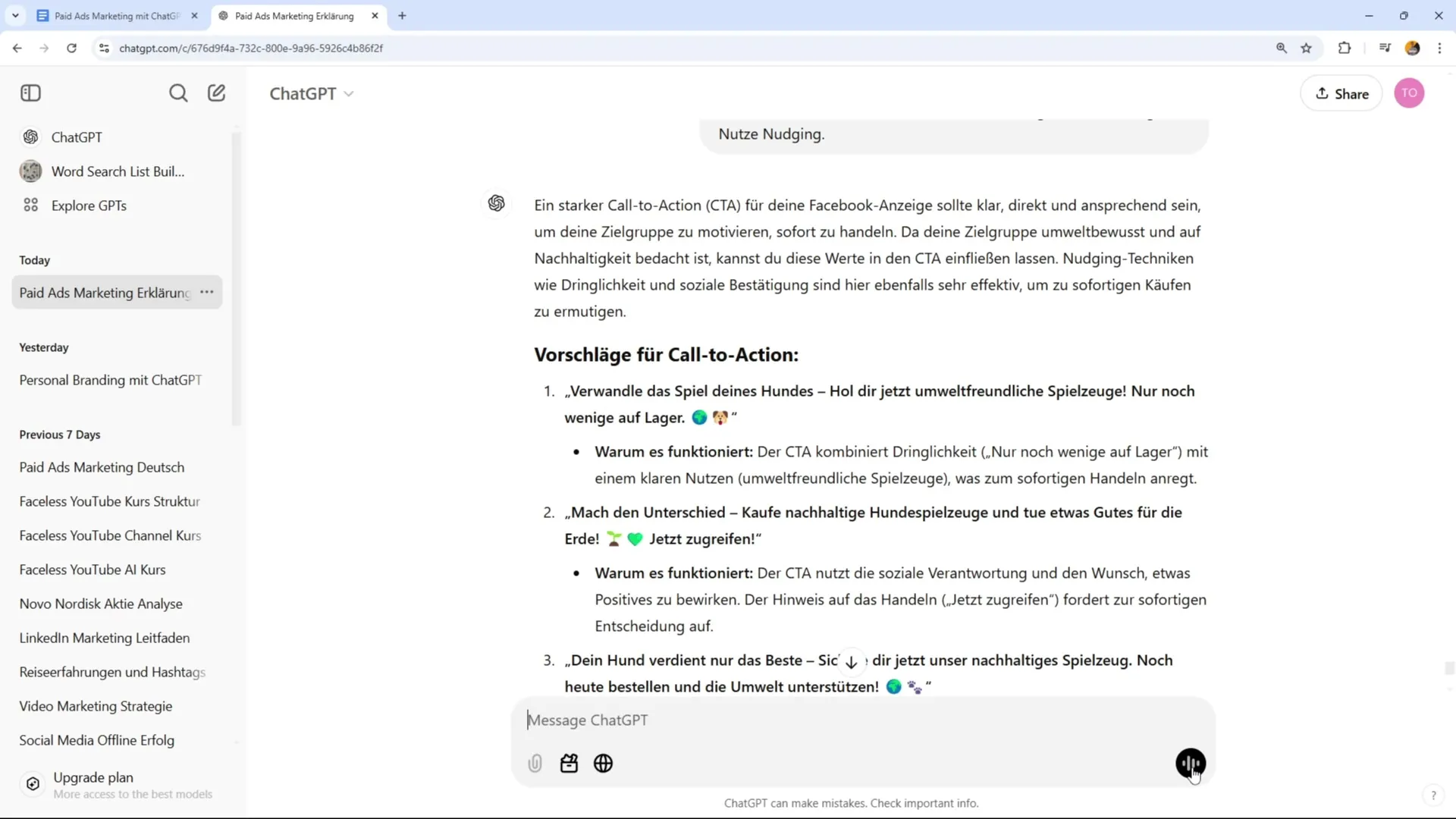
4. Experiment with Different Phrasings
Test different CTAs to find out which resonate best with your target audience. Start with long, detailed call-to-actionsand then try shorter, more concise versions. Pay attention to your users' reactions and adjust your CTAs accordingly.
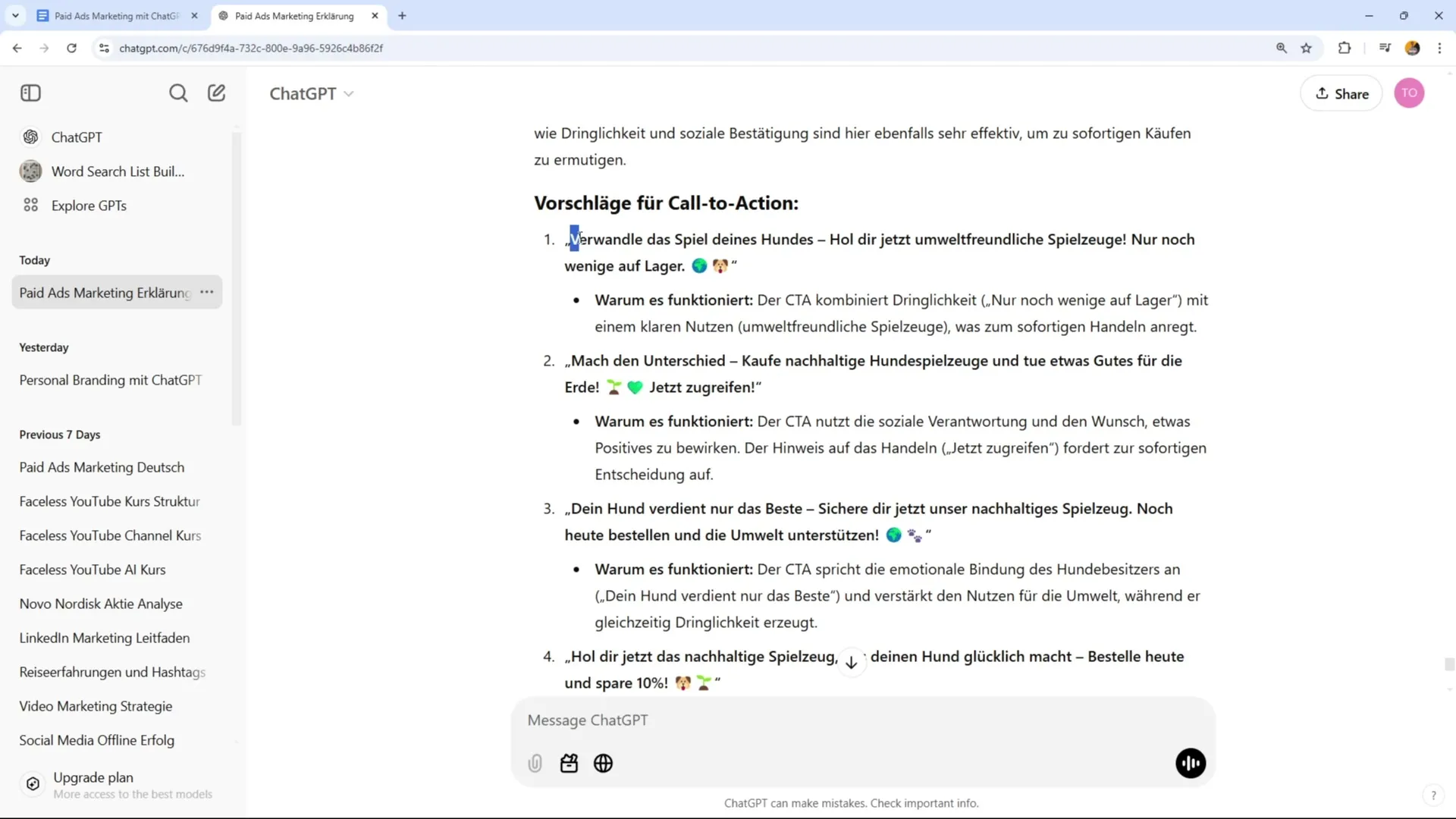
5. Use Emotional Appeal
Use emotional triggers to connect with your target audience. A CTA like "Get the best toy for your dog now" not only addresses the purchase but also appeals to the love users have for their pets.
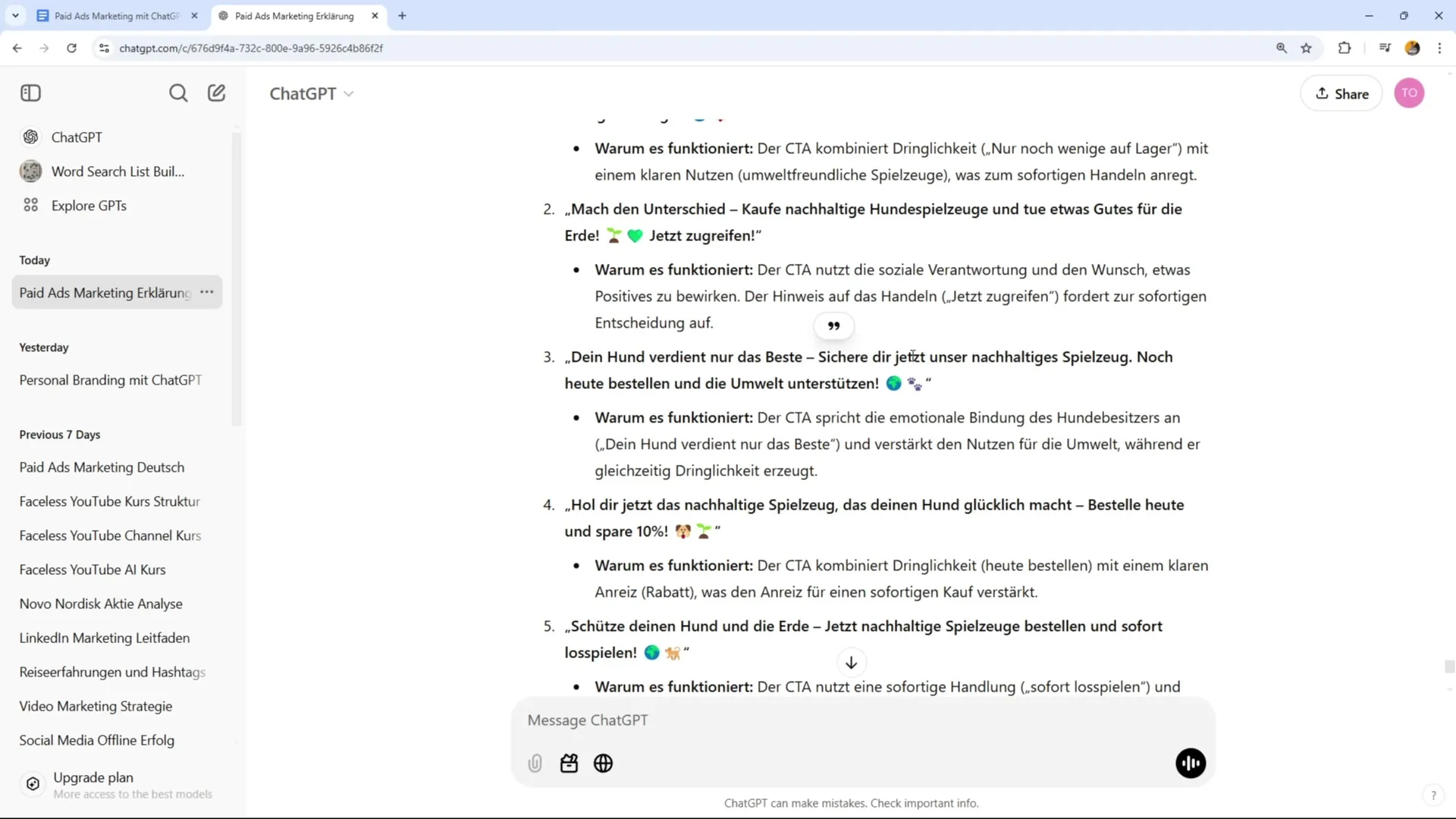
6. Use Social Proof
People tend to make decisions based on the actions of others. Incorporate elements of social proof in your CTAs – e.g. "Already 1000 satisfied customers trust us" or "Click here to find out why other dog owners love us." This creates a sense of security and conviction.
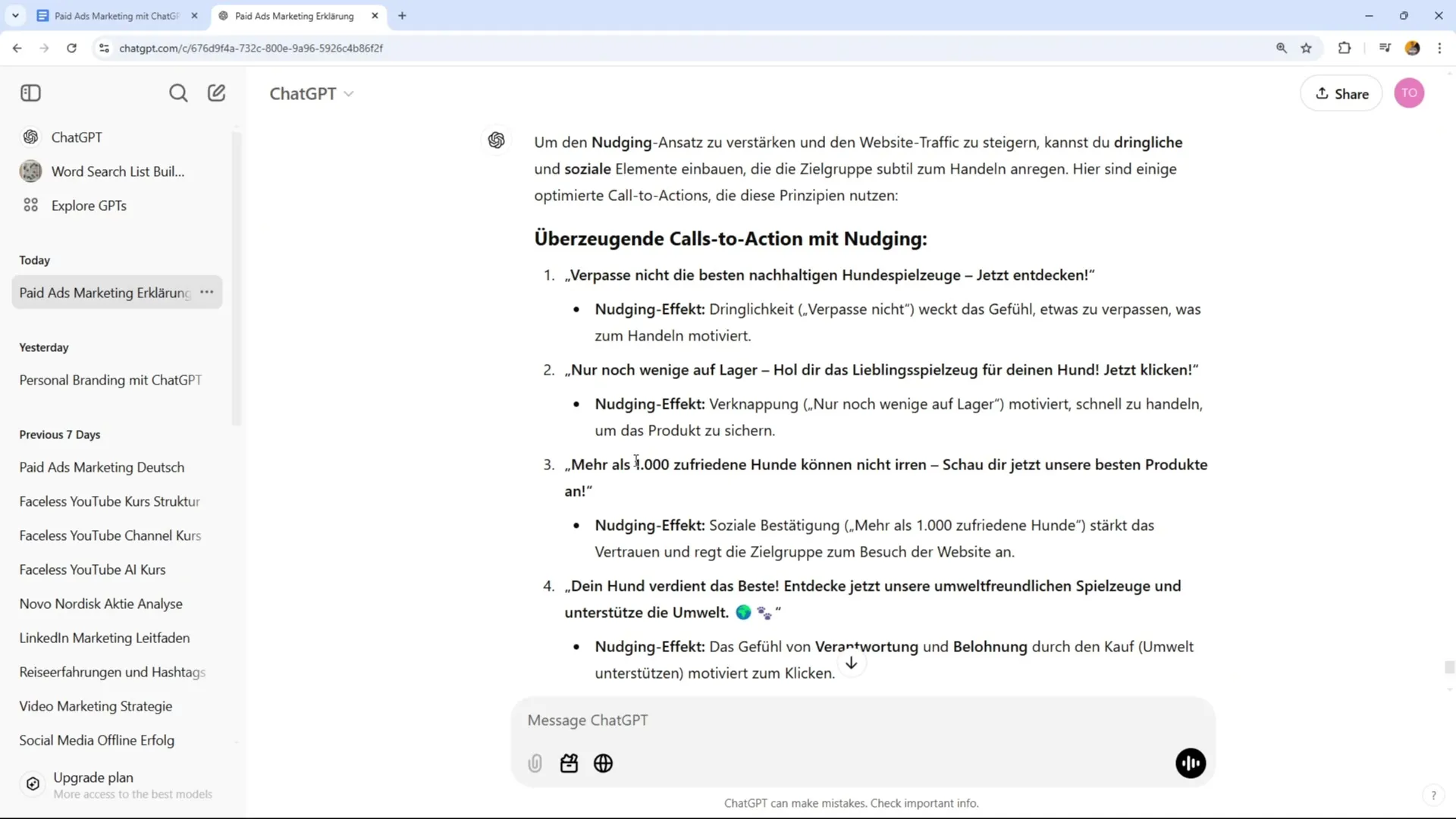
7. Pay Attention to Scarcity Methods
Emphasize the availability of your products through scarcity: Phrases like "Only a few pieces left" or "Almost sold out" motivate users to act immediately to not miss the opportunity.
8. Create a Connection to Pain Points
Recognize the problems your target audience has and connect them with your product. A call-to-action like "Protect your dog and the planet – Order sustainable toys now" can not only offer solutions but also promote a sense of responsibility.
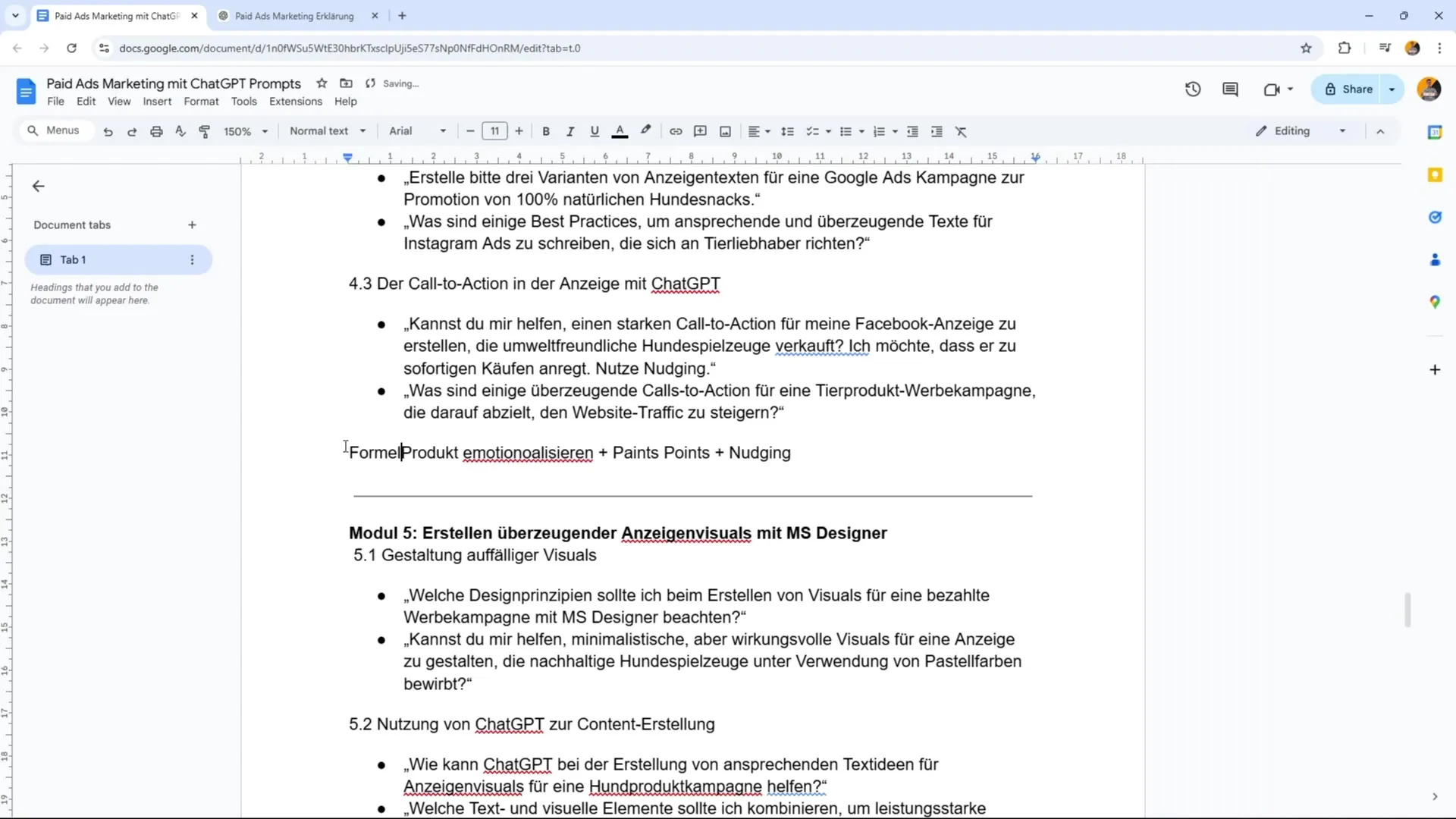
9. Continuously Test and Optimize
After you have tried various CTAs, it is important to analyze the results and continuously optimize. Use A/B testing to find out which phrasings and strategies yield the best results.
Summary – Crafting Strong Call-to-Actions for Higher Conversion Rates
An effective call-to-action can make the difference between a successful and an ineffective ad. Discover which strategies work best for your product and target audience, and focus on emotional appeal, urgency, and social proof. Be prepared to test and optimize to achieve the best results.
FAQ
What is a call-to-action?A call-to-action motivates users to take a specific action, e.g., to make a purchase.
How can I create urgency in my CTAs?Use phrases like "order now" or "only a few left."
What are nudging strategies?Techniques that guide users to decisions through urgency and emotional appeal.
How important is social proof in CTAs?Social proof builds trust and encourages users to take an action.
Why should I test different CTAs?To find out which phrasings and approaches yield the best conversion rates.


